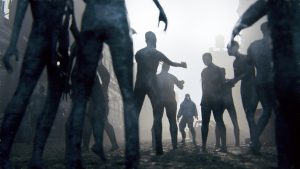Further The Zombie Stock Market Bubble
The comments below are an edited and abridged synopsis of an article by Jeffrey Snider
The Bureau of Economic Analysis (BEA) has revised its preliminary estimate of GDP. That means it is time to look at corporate profits again. Included with the recalculated headline output estimate is the BEA’s first run of profit figures and, if you are Jay Powell, you aren’t going to like what you find.

Snider discusses growth in the third quarter; what the slowdown from 2017 to 2018 really means; corporate profits or the lack thereof; declining revenue growth and profit problems; and dwindling payroll expansions.
A reasonable interpretation of the graphs presented is that, given four downturns (resulting in three false dawns), the likelihood of any recovery and acceleration is small. One false dawn may be random, two begins to look like a pattern, so three cannot be a strong labour market that will finally deliver the macro goods in a timely fashion.
If the economy is so bad, how can stock prices keep pushing to record highs? It is mainly because of central bankers who have let equity investors fool themselves into believing in QE and how it must have produced a real economic boom, despite earnings, over the last several years. That boom will (somehow) create the earnings.
The lack of macro growth, and therefore profits, has left Corporate America in a precarious position: top heavy. Without real top- or bottom-line growth the last half decade, corporate strength has been vastly overestimated. That is why, in 2018 and 2019, there was mainstream recognition of zombie companies that wouldn’t exist if there had been actual growth derived from an actual boom.
That becomes an issue if or when these zombie companies are forced to confront the reality of their true bottom-line situations, especially if the BEA is right about where those are heading. Recession is a surefire way for that to happen.
The zombie stock bubble? Perhaps the most fitting description.
